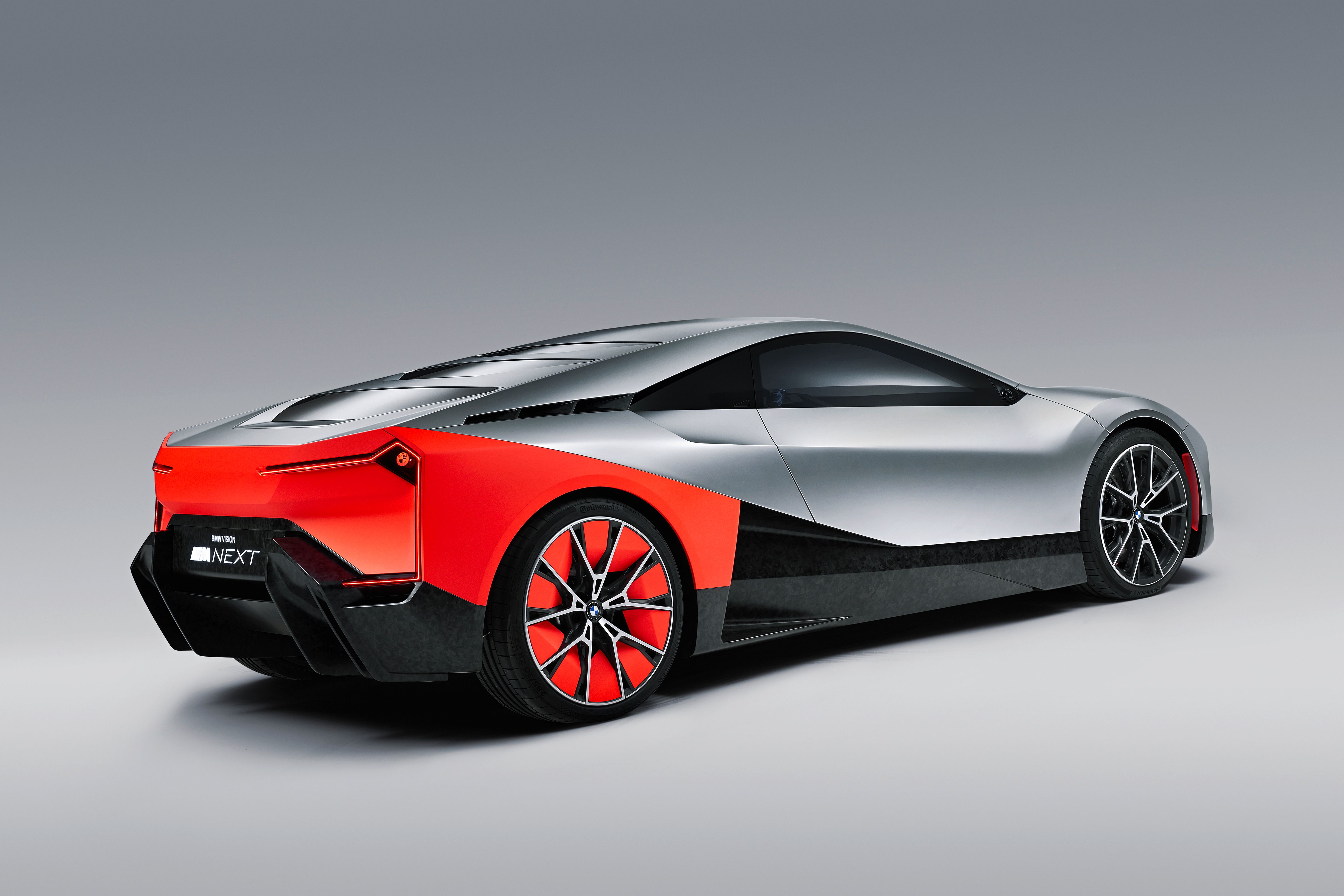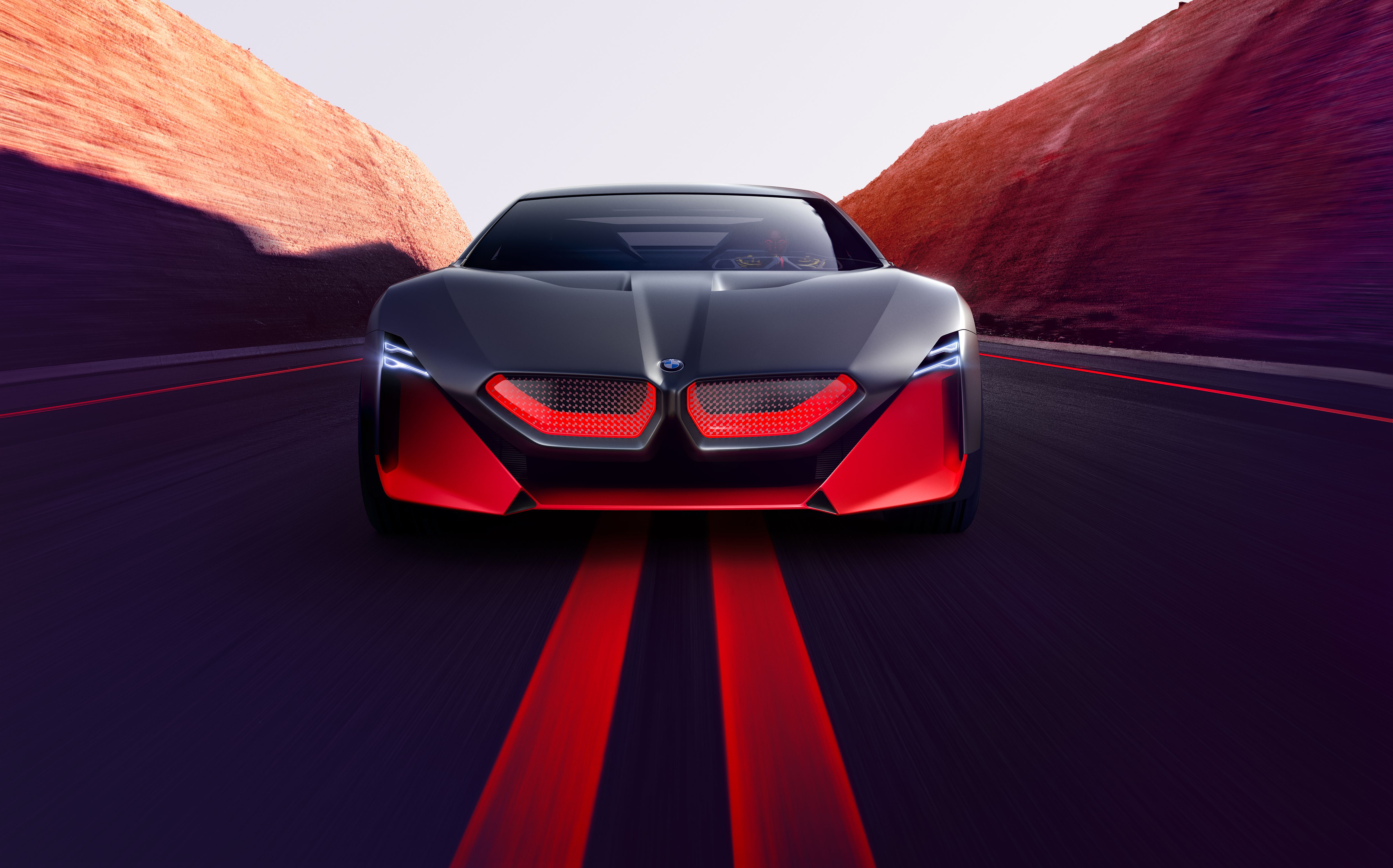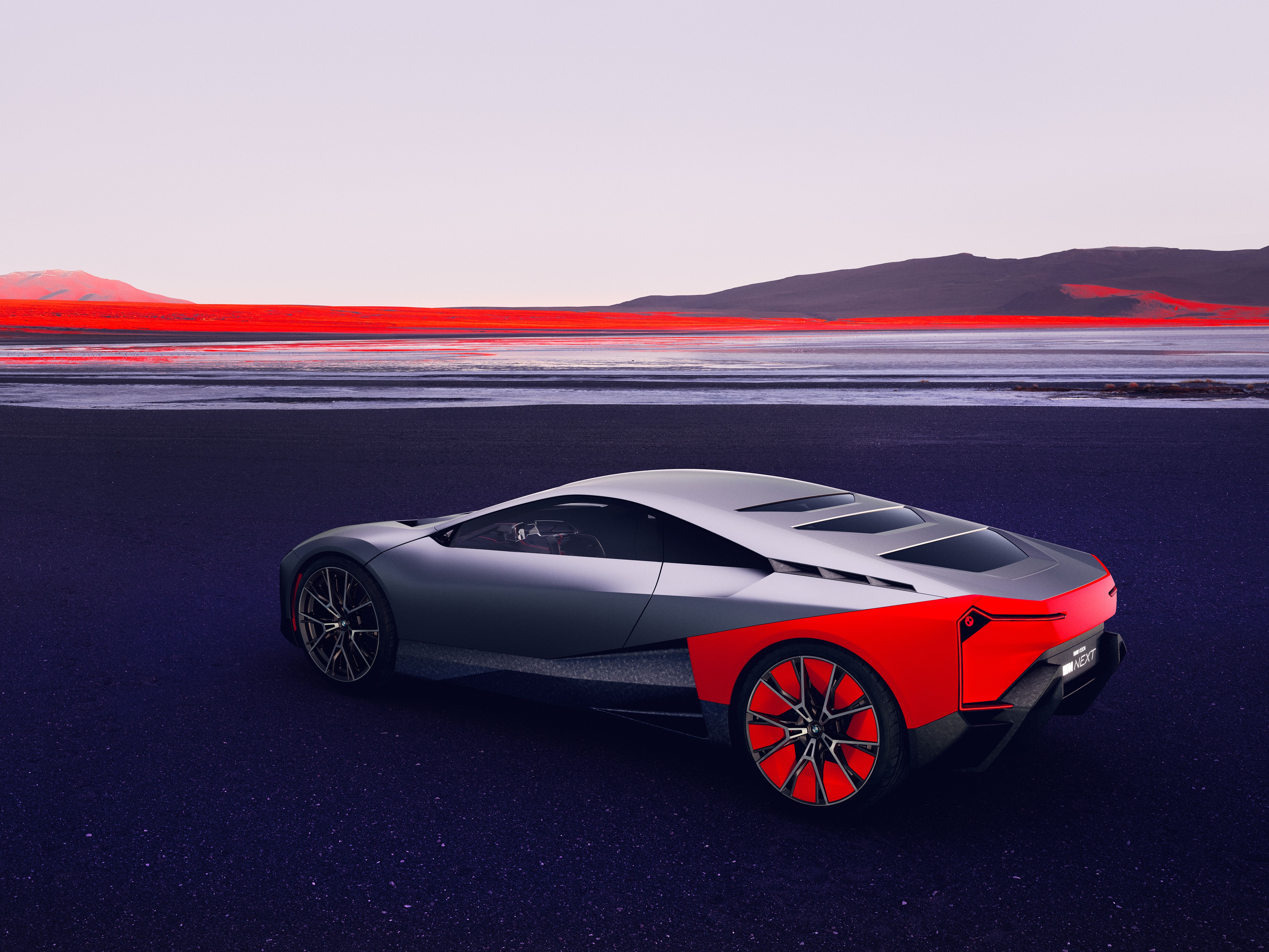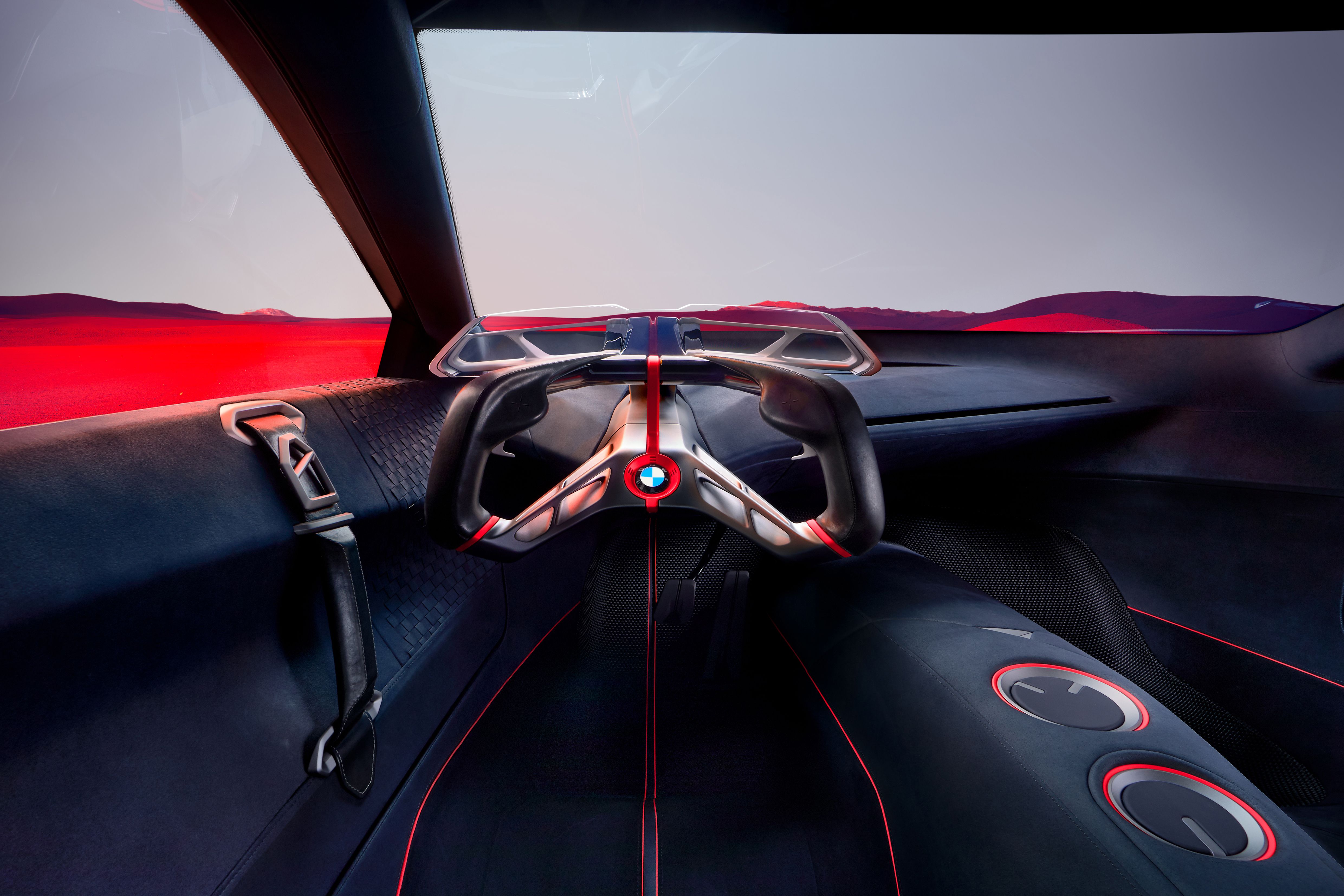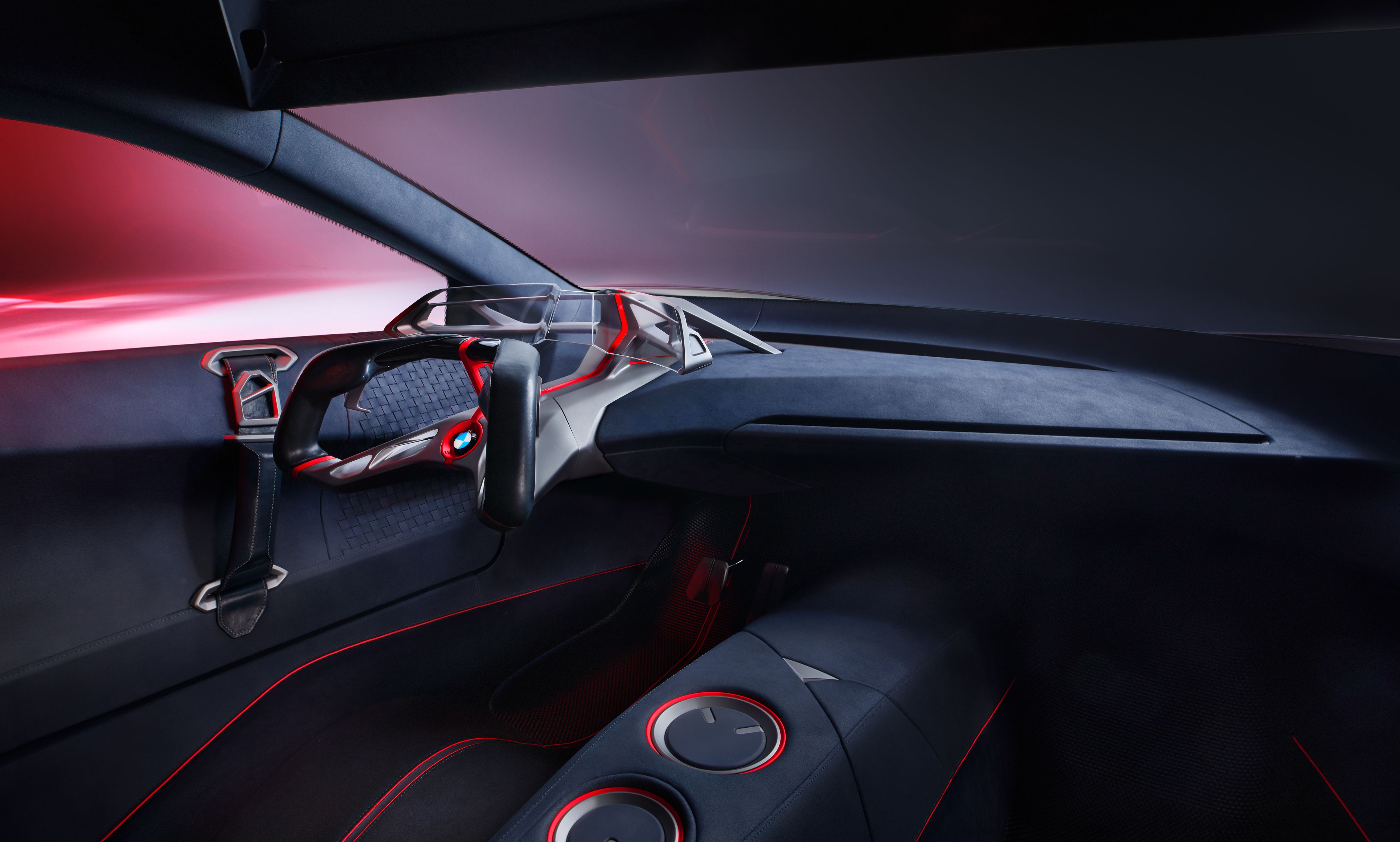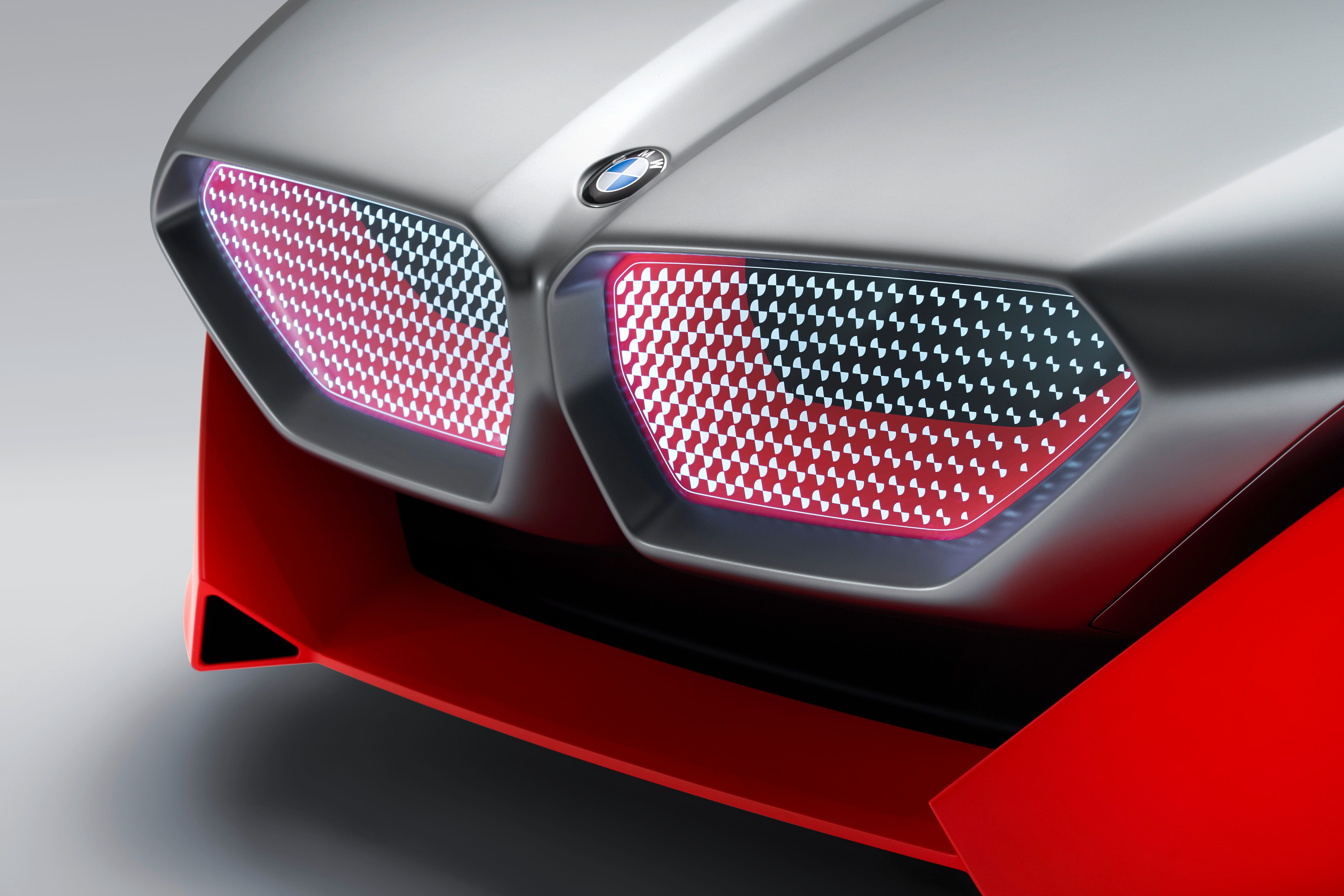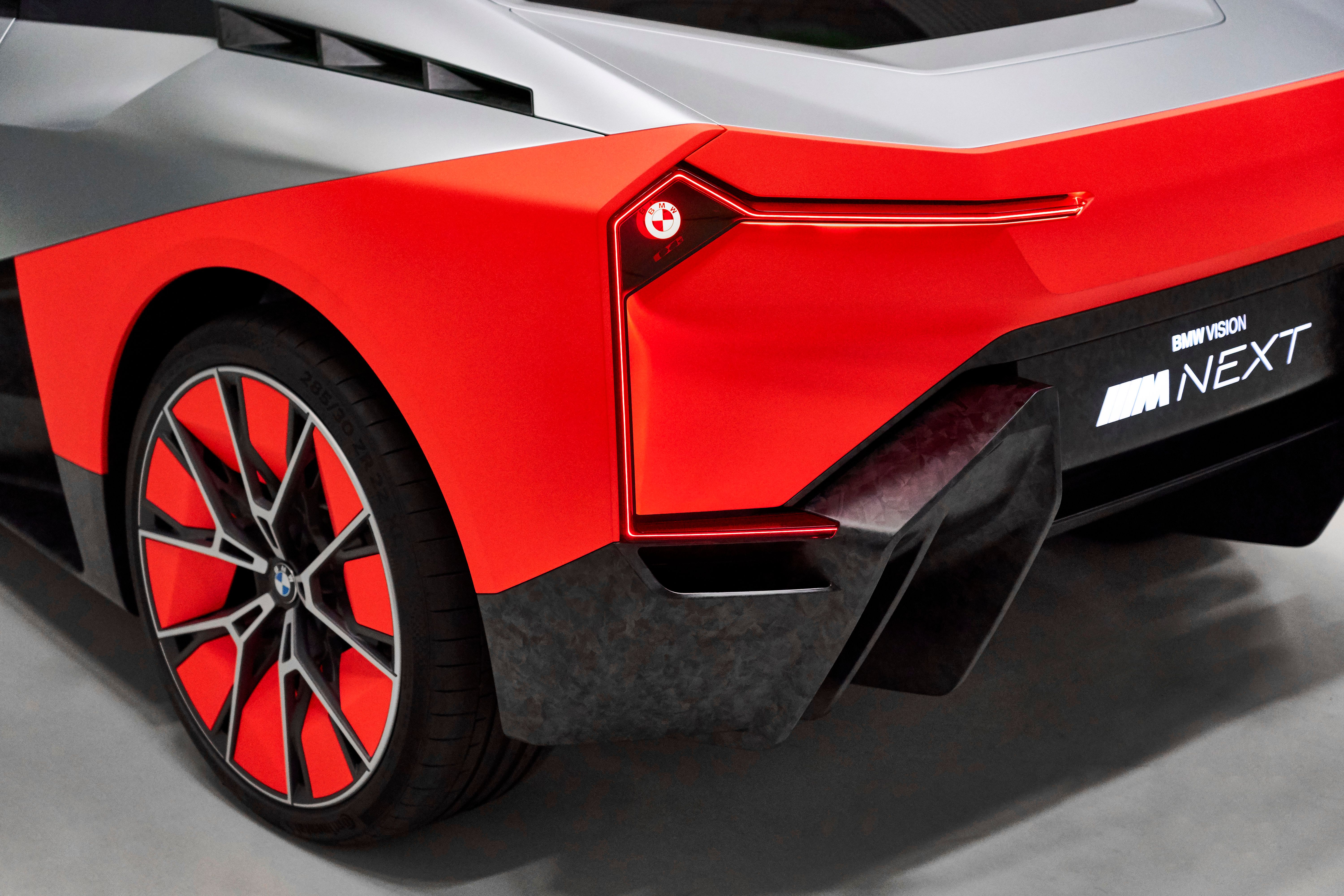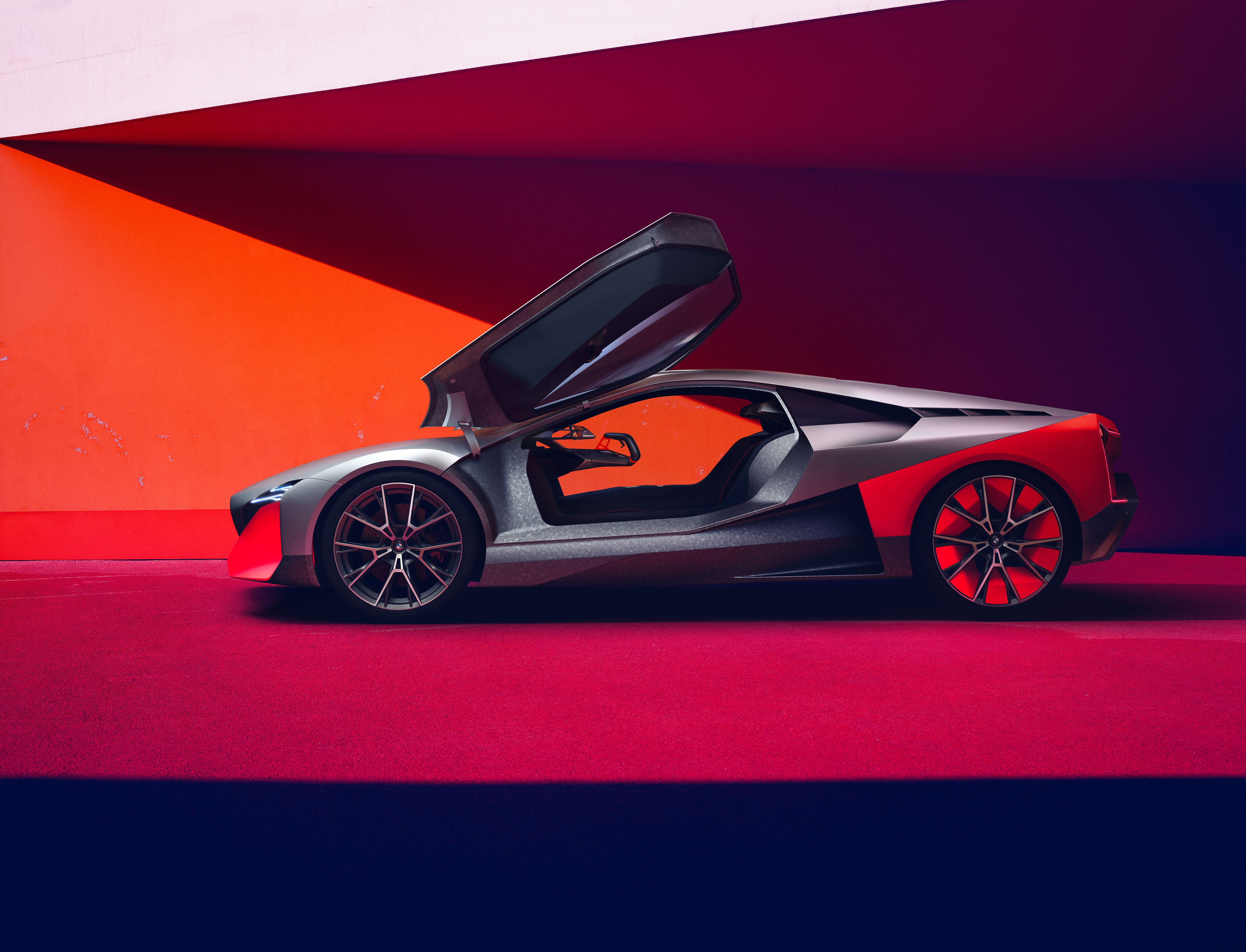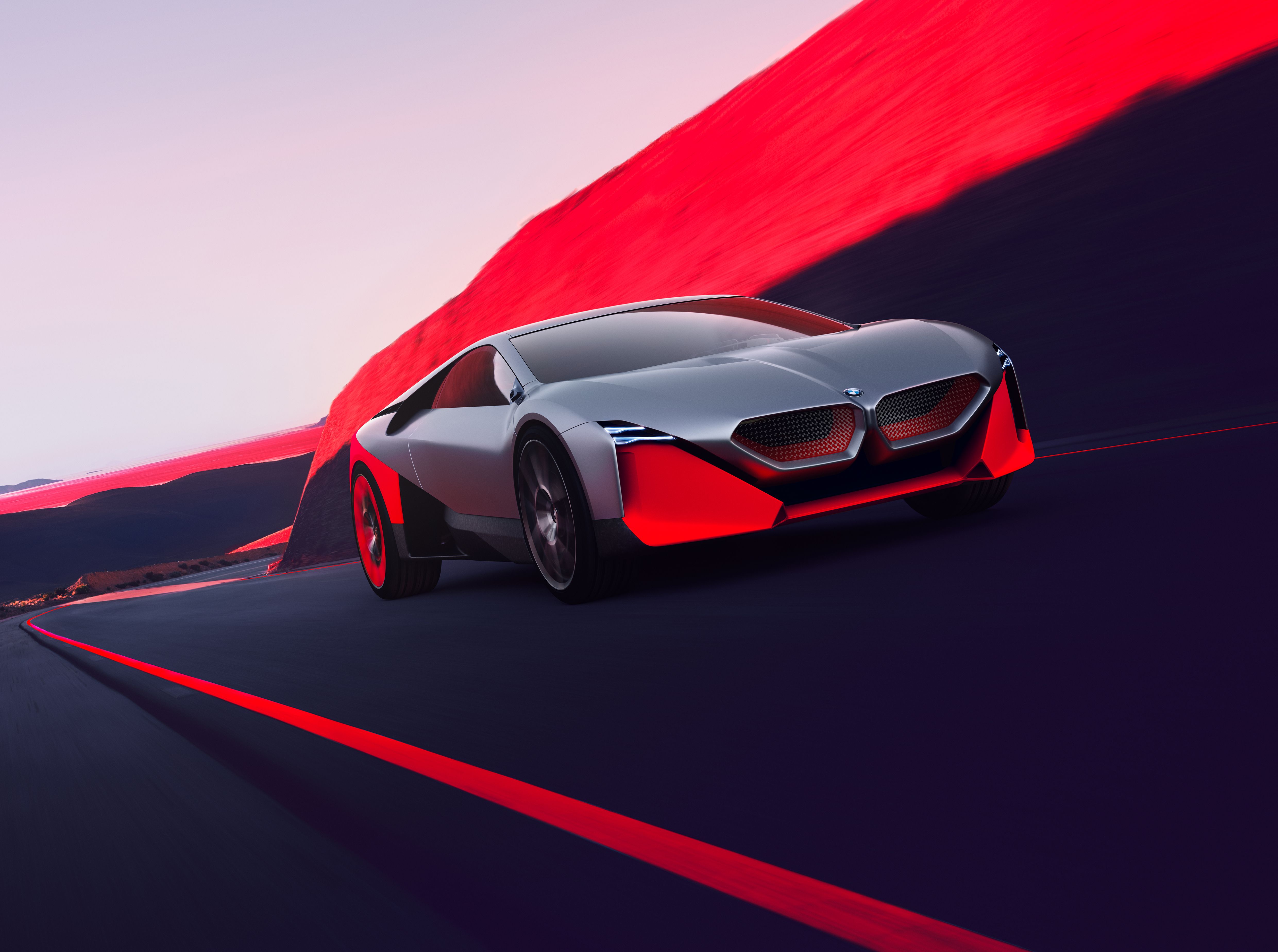BMW is making a bold statement for the future of the company with the Vision M Next concept, a radical looking sports car with a plug-in hybrid heart that’s jam-packed with tech. The study not only makes a statement on design, but it also emphasizes the choice future drivers will have to make - will you drive yourself to your destination or will you allow the car to drive you there?
The automaker touts it as “a glimpse into the future of sporty driving,” but also a vehicle that “demonstrates how state-of-the-art technology can also make the experience of driving yourself purer and more emotionally engaging.” It’s therefore trying to meld two ideas that at first seem mutually exclusive: deriving fun not only from driving, but also being driven around in a sporty car. It may also be a preview for a future production model, possibly the next-gen i8, an i8 replacement, or even BMW’s Ferrari and McLaren rival that’s rumored to debut in a few years’ time.
BMW Vision M Next exterior design
BMW is really proud of the E26 M1 sports car it built from 1978 to 1981 because it has used that car as inspiration for this new study, after reinterpreting many of its design cues to create the electrified i8 production car. Now, for the Vision M Next concept, the Bavarian automaker has borrowed yet more classic M1 cues, however, this time they have been reimagined in a different style - this latest study has more of a retro-futuristic vibe about it compared to the unashamedly futuristic i8.
|
|
ids=846749,846750 |
no_overlay=false |
before_label=2019 BMW Vision M Next |
after_label=2019 BMW i8> |
From the side, Vision M Next looks like an aggressive wedge with no door handles or side mirrors. The front end looks vertical when viewed from a lateral perspective, and as you move toward the front, you begin to see why this is - the front fascia is dominated by the oversized, backlit BMW twin-kidney grille that protrudes outward for a very dramatic effect. It looks daring from the side, but from the front, it looks downright mean - like it’s ready to snort people’s dogs clean off the sidewalk, leash and all.
The rear end is no less dramatic. Just like the lower part of the front end, the rear is finished in a striking shade called Thrilling Orange (a homage to the 1972 BMW Turbo E25) that’s also used on the small covers placed in between the spokes of the rear wheel. You really can’t look away, and the more you look, the more details you start to see, like how the LED light clusters form a pretty wide “C” shape that extends all the way from the top edge of the rear end all the way down to the diffuser made out of recycled carbon fiber.
BMW Vision M Next interior design
BMW says the Vision M Next’s interior appears to have been “cut from a single mould,” trying to emphasize how well all of its features are integrated. Most of the dashboard and interior panels are covered in a woven synthetic fiber, but there’s also some leather as well as anodized aluminum and painted surfaces.
The effect is clearly minimalist, and its aim is to emphasize individual pieces. For instance, the curved glass display that takes the place of conventional dials appears to have landed on the dash from another planet. Its shiny finish creates a pleasant contrast with the rest of the interior, as do pretty much all other visible shiny bits (of which, it must be said, there are quite few). The steering wheel is not really a steering wheel, and it looks more akin to the handlebars of a supersport motorbike (two of them, stacked one on top of the other) - it looks like you don’t just steer the vehicle with it, but also hold on for dear life (which you probably will when the car drives itself in a vigorous manner).
There is also some Thrilling Orange piping on the center tunnel and the seats, complimented by additional details in the same color around the cupholders, on the steering wheel, and the digital gauge cluster. Overall, the interior has an unashamedly minimalist look (that suits the car very well) and all the points of interest are focused towards the driver, in true BMW tradition. It must be said, though, that this interior bares absolutely no resemblance to any current production BMW, even the rakish i8; it’s all pure fantasy, but we do hope it will inspire the look of future BMW production interiors.
BMW Vision M Next powertrain & tech
Powering this striking two-seater is a plug-in hybrid powertrain that mates a four-cylinder engine (of unspecified displacement) to electric motors for a grand total of 591 horsepower (600 PS / 441 kW). The manufacturer says the car can be driven either in all-wheel drive mode when the gasoline engine is running and all of the power can be accessed, but there’s also an all-electric mode in which only the rear wheels are powered.
2019 BMW Vision M Next specifications
|
Motor |
Four-cylinder + electric motors |
|---|---|
|
Horsepower |
591 HP |
|
0 to 100 km/h |
3 seconds |
|
Top Speed |
300 km/h (186 mph) |
|
Electric range |
100 km (62 miles) |
This concept also debuts new illumination innovations - BMW calls it Laser Wire lighting technology that uses “glass fibers coated with phosphorous are used to produce headlight elements with a new, super-slim and extremely precise form.” Through the use of this tech, BMW has managed to recreate its traditional four-eyed headlight design, but give it a more modern spin - you know it’s a BMW by looking at the headlights, but you also notice there’s something a bit special about the way they look. The same tech is applied to the rear light clusters, but it’s somehow less impressive than what they’ve done for the front.
BMW Vision M Next significance
BMW clearly wants to make a bold statement with the Vision M Next concept, but we don’t know if the Bavarian automaker is just showing off what it can do or if the study actually previews a future electrified and semi-autonomous sports car.
With that being said, maybe automotive design has advanced sufficiently that, for instance, an interior similar to what you can see in this concept may not be far-fetched. The exterior could be more easily be turned into something that could enter production in the near future, but the interior looks like it’s from a movie set sometime around the year 2030. Maybe BMW will surprise us within a couple of years and replace the current i8 with the production version of M Next - it is called “M Next,” after all, so maybe it really is next.
There is another scenario, though. Its powertrain makes nearly twice as much power as the i8’s, so maybe it previews a model that would sit above the i8 in the range, a vehicle with actual supercar performance, something to rival the likes of the Honda/Acura NSX hybrid. There are, after all, rumors that BMW is working on a supercar of its own, believed to be due in 2023. It is said to be the pinnacle of BMW’s Motorsport range, a vehicle that would take the fight to McLaren, Ferrari and Lamborghini with a radical electrified contender.
|
|
ids=846751,846752 |
no_overlay=false |
before_label=2019 BMW Vision M Next |
after_label=2020 BMW i8 rendering> |
In fact, the scene says BMW won’t replace the current i8 with a second-gen model, so once it’s out of production, it will be out of production for good. This would suggest the fact that the Vision M Next concept is more likely to preview something that will bear an “M” moniker instead of an “i”. Or it may just very well be a concept that will lend some of its design cues to future models as is often the case with concepts whose name isn’t exactly the same as the model they preview (the i8 was previewed by a concept that was also called i8).
Further reading
Read our full speculative review on the 2020 BMW i8.
Read our full driven review on the 2019 BMW i8 Roadster.

